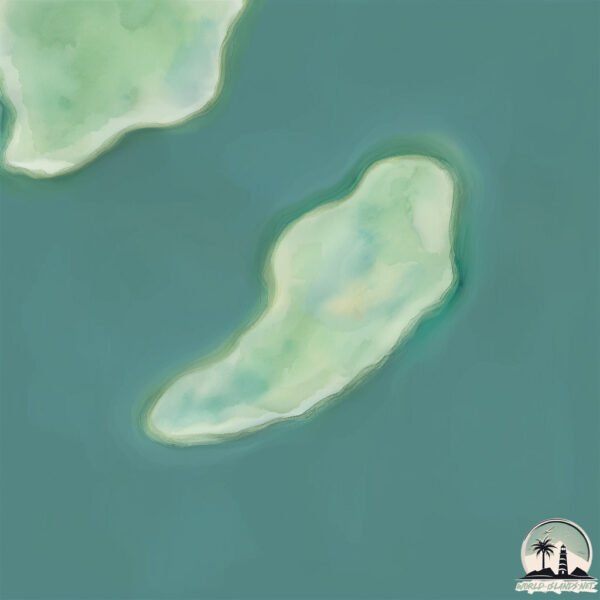Welcome to Grantham Island , a Temperate island in the Great Australian Bight, part of the majestic Indian Ocean. This guide offers a comprehensive overview of what makes Grantham Island unique – from its geography and climate to its population, infrastructure, and beyond. Dive into the details:
Geography and size of Grantham Island
Size: 0.566 km²Coastline: 4.5 kmOcean: Indian OceanSea: Great Australian BightContinent: Oceania
Grantham Island is a Tiny Island spanning 0.566 km² with a coastline of 4.5 km.
Archipel: –
Tectonic Plate: Australia – A major tectonic plate covering Australia, New Zealand, and parts of the Indian and Pacific Oceans, known for its relative stability and occasional seismic activity.
The geographic heart of the island is pinpointed at these coordinates:
Climate and weather of Grantham Island
Climate Zone: TemperateClimate Details: Warm-Summer Mediterranean ClimateTemperature: Warm Summer
Climate Characteristics: Characterized by warm, dry summers and mild, wet winters, typical of coastal areas with abundant sunshine Rain is more common in the winter months, maintaining a moderate climate.
Topography and nature of Grantham Island
Timezone: UTC+09:30Timezone places: Australia/AdelaideMax. Elevation: -3 m Mean Elevation: -3 mVegetation: Open WoodlandTree Coverage: 54%
The mean elevation is -3 m. Remarkably, this unique island barely emerges above the sea level, showcasing nature’s fascinating interplay with the ocean. The island is characterized by Plains: Flat, low-lying lands characterized by a maximum elevation of up to 200 meters. On islands, plains are typically coastal lowlands or central flat areas.
Dominating Vegetation: Open Woodland
Vegetation: 1 vegetation zones – Minimal Diversity Island
Infrastructure and Travelling to Grantham Island
Does the island have a public airport? no .
Does the island have a major port? no .
The mean population of Grantham Island is 0 per km². Grantham Island is Uninhabited. The island belongs to Australia .
Continuing your journey, Thistle is the next notable island, situated merely km away.
Grindal Island North Bay Reef inc. sea lions
Grindal Island in the Lincoln National Park, featuring Australian Sea Lions. NEVER HEAD OUT ALONE | Underwater diving video ...
Grindal Island North Bay Reef inc. sea lions
Grindal Island in the Lincoln National Park, featuring Australian Sea ...
Grindal Island in the Lincoln National Park, featuring Australian Sea Lions. NEVER HEAD OUT ALONE | Underwater diving video ...
49 Grantham Cres Dangar Island
E102 - Sir Joseph Banks Group (Reevesby & Blythe Islands)
We leave Port Lincoln and head out to the Sir Joseph Banks Group of ...
We leave Port Lincoln and head out to the Sir Joseph Banks Group of Islands stopping at Home Bay, Reevesby Island and ...
Australia is classified as Developed region: nonG7: Developed economies outside of the Group of Seven, characterized by high income and advanced economic structures. The level of income is High income: OECD.
News – Latest Updates and Headlines from Grantham Island
Stay informed with the most recent news and important headlines from Grantham Island. Here’s a roundup of the latest developments.
Loading...
Please note: The data used here has been primarily extracted from satellite readings. Deviations from exact values may occur, particularly regarding the height of elevations and population density. Land area and coastline measurements refer to average values at mean high tide.

